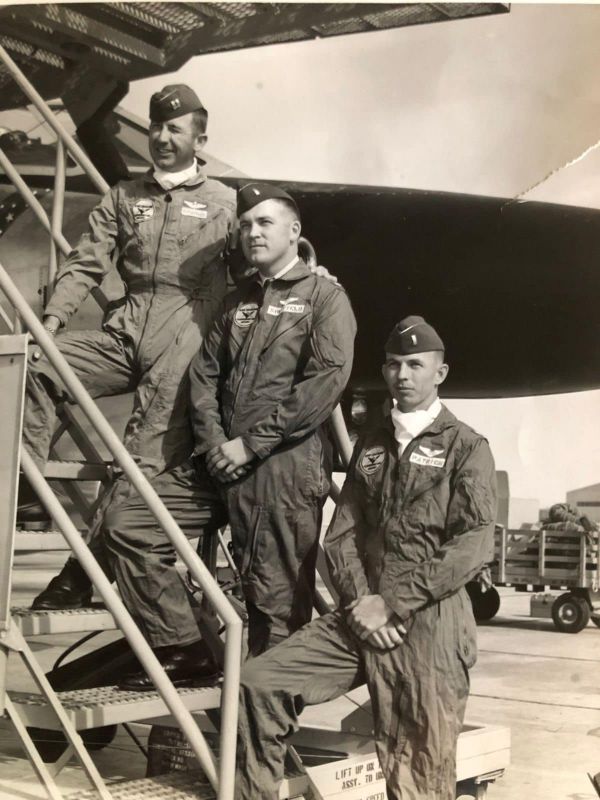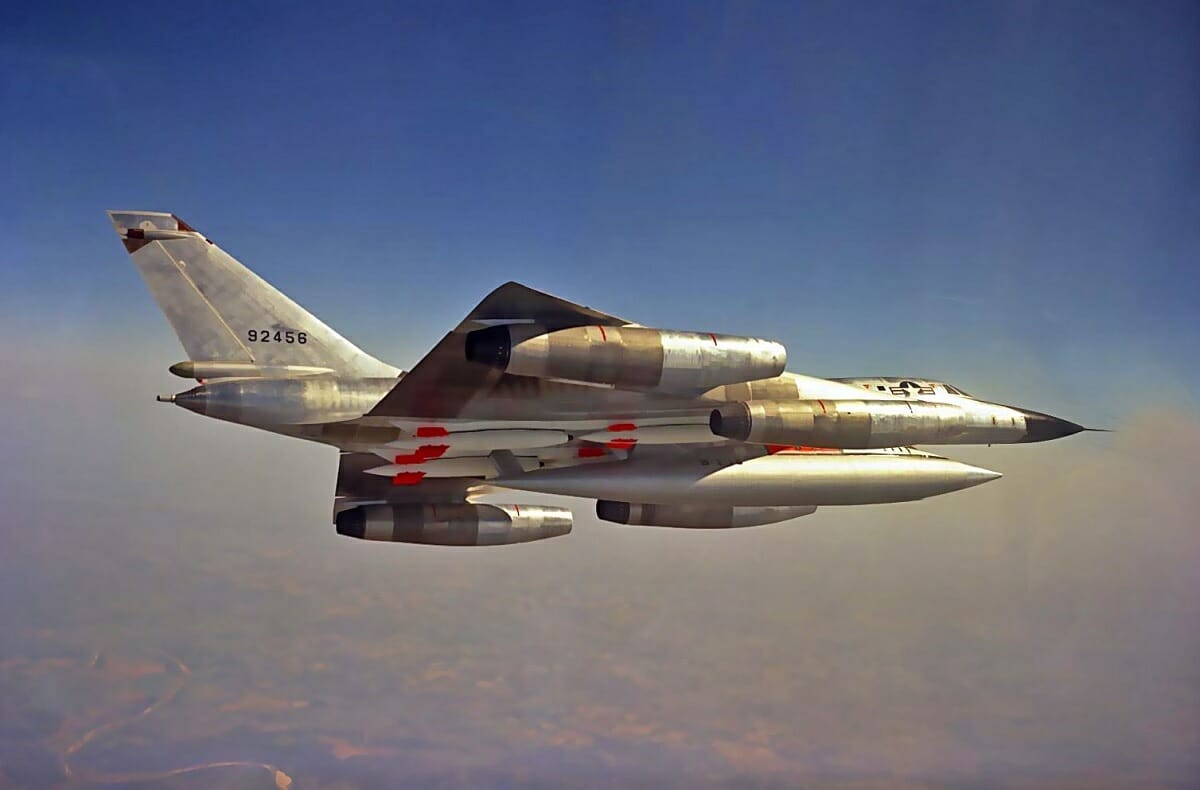The B-58 Hustler
On November 11, 1956, the B-58, the US Air Force’s first operational supersonic bomber, took off. Apart from its delta wing design, the Hustler was distinguished by its advanced inertial guidance navigation and bombing system, its slender “wasp-waist” fuselage, and its extensive use of heat-resistant honeycomb sandwich skin panels in both the wings and fuselage. The thin fuselage made it impossible to carry bombs inside; thus, a nuclear weapon, additional fuel, reconnaissance equipment, and other specialized gear were all stored in a droppable, two-component pod beneath the fuselage. The B-58 crew consisted of a pilot, navigator/bombardier, and defense systems operator.
Richard “Butch” Sheffield volunteered for the then-new B-58 while serving as a navigator and bombardier on the B-47. He had to return to his previous rank of lieutenant after losing his spot promotion. In his book “The Very First,” which he left for his family, he writes about it.
‘I entered the B-58 Combat Crew Training School (CCTS) as a student. The school was about two months long with academics and simulators. I was crewed with Captain Sparks (Sparky), aircraft Commander (AC), and Lt. Patrick, Defense Systems Officer (DSO).
The first crew to pass Central Evaluations Group
‘We soon started flying, and I loved the B-58. The bombing and navigation system, plus the cockpit, were excellent. We became combat-ready fast and were one of the first crews checked out in the aircraft, number fourteen, I believe.
‘General LeMay wanted all SAC crews to be changeable. Each crew and crew position were to have procedures alike for the aircraft they were flying in. The Central Evaluations Group (CEG) visited each wing and tested and evaluated the crew force to see if all wings performed the same procedures. To pass CEG was a big deal in B-47’s.
‘The CEG people wanted to get their foot in the door on this new program, so they decided that they should come in and give a check ride to one of the crews. We were selected.
‘It was a joke; they didn’t know anything about the aircraft, but they went through the motions and checked us; it was a piece of cake; we passed. So, we became the first B-58 crew ever to pass CEG.’
B-58 Hustler nose-high stall over Dallas
He continues;

‘About six months after we became combat-ready, we flew a Mach 2 bomb run on Dallas at night. When the run was over, and we went to start our descent from fifty thousand feet, Capt. Sparks pulled back the power but FORGOT to take the altitude hold off.
‘The aircraft went into a nose-high stall, and we began to drop quickly; the engine’s compressor stalled, and the generators all went offline. We lost all electrical power; I had only a tiny battery-powered light in the cockpit. The only thing I could see was the airspeed and altimeter. I called the pilot, who said the flight controls had locked up.
‘It took one hundred and fifteen pounds of pressure to override the autopilot. He was a petite guy trying to override it, not knowing that altitude hold was on. It was a wild ride down. We were falling tail first with very little forward motion.
‘I decided to eject at fifteen thousand feet as we were trained. At about twenty thousand feet, I felt the nose of the aircraft starting to drop, and he said, I think I have got it (he had overridden the autopilot). Once the nose came down, the engines could be re-started, and we recovered at about ten thousand feet; we landed at Carswell. No one said a thing.’
The pilot quits
Sheffield concludes;
‘The following day, when I went into the Squadron, everyone was saying, did you hear about “Sparky?” I said no. They said he went into the commander (CO) office this morning, and threw his wings on his desk, and said, “I quit!” He then went around the Squadron bad-mouthing the B-58 and telling the other crews they should quit the program, too, because the aircraft was unsafe; the CO told him to get out.’
Up until 1964, when he was hired away to the SR-71 program, he continued to serve with the B-58s. In 1965, he arrived at Beale Air Force Base after passing the astronaut physical at Brooks Air Force Base in Texas.
Check out Habubrats SR-71‘s Twitter profile and Born into the Wilde Blue Yonder Habubrats‘s Facebook page for further Blackbird photos and stories.

Photo by Linda Sheffield Miller and U.S. Air Force

